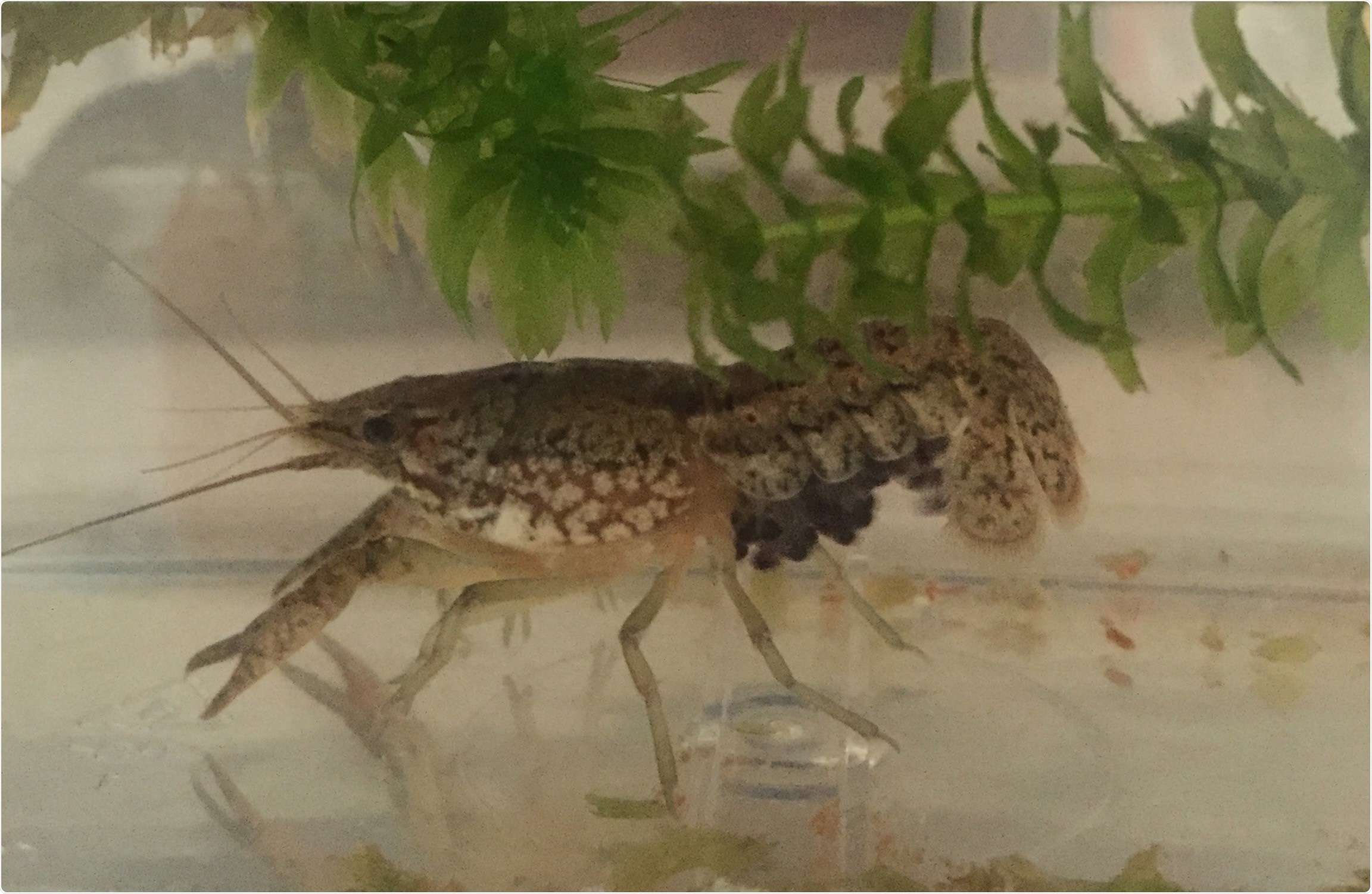Cellular senescence is a state of presumably “irreversible” arrest of cell proliferation/division, which can be triggered by a variety of both intrinsic and extrinsic stressors.
Aging is the continuing process of such stress exposures, and with advancing age (normal aging), we must carry lots of senescent cells within our bodies. Senescent cells also often provide some ‘bad influences’ to surrounding healthy cells; such as chronic inflammation and tumorigenesis.
In some premature aging (e.g., premature aging syndromes), certain pathogenic features accompanied with normal aging can be accelerated and the similar aging phenotype is often presented prematurely and sporadically.

Credit: S&J Kishi Research Corp.
Why did you choose to study the gene spns1 in your recent research?
We wanted to find some predictable factors of aging, which might belong to any gene mutation with the loss of its normal function in cellular homeostasis by causing cellular senescence.
When I was a posdoc at Dana-Farber Cancer Institute/Harvard Medical School, I started searching for gene mutations that cause cellular senescence in zebrafish “embryos and larvae”, which can be validated in 3-5 days after their fertilizations.
People might feel this is strange because embryos and larvae are on the opposite side of senescence (or aging) because they sound too young. However, senescence can still occur in such babies physiologically and patho-physiologically in fish as well as mammals.
The most critical point for our experimental approach was that fish develop ex utero but mammals do in utero, which made a tremendous advantage and convenience in screening of mutant animals by using zebrafish. Also, zebrafish embryos and larvae are transparent and small enough to perform high-throughput screening.
We screened over 500~ mutant genomes and found that spns1 is one of the most apparent genes out of 11 candidate genes that show embryonic and/or larval senescence (“developmental senescence”).
Moreover, partial loss-of-function of the spns1 gene in adult fish also showed premature aging phenotypes, while the complete loss-of-function of the spns1 gene induced developmental senescence and lethality.
When we had found these results, we did not know any essential mechanism of the developmental senescence and accelerated aging in the spns1-deficient fish.

A marbled crayfish with (black) eggs under her tail. Credit: S&J Kishi Research Corp.
What did your research involve and what were your main findings?
Recently we were looking for any suppressive pathway and/or mechanism against Spns1 deficiency by performing some chemical screening. Then we found the v-ATPase inhibitor and other FDA-approved proton-pump inhibitors (gastric acid reducers such as omeprazole; well known as Prilosec) can significantly suppress the spns1-mutant phenotypes including developmental senescence.
To confirm the chemical screening outcomes, we further examined if the genetic suppression and disruption of the v-ATPase can be effective to ameliorate Spns1 deficiency. However, very intriguingly but controversially, in our original genetic screening of mutants that showed developmental senescence in zebrafish (as mentioned above), we identified the mutation of the atp6V0c gene (one of the subunit gene of v-ATPase).
This means that the sole disruption of either v-ATPase or Spns1 induces senescence whereas the combined dual disruption might be counteractive. Therefore, we wanted to generate the double-mutant fish carrying both the spns1 and atp6V0c genes concurrently. However, these genes are on the same chromosome and very near each other, and it was quite impossible to establish the double ‘homozygous’ mutant by crossing the two lines.
Then, we decided to utilize the CRISPR/Cas9-mediated genome editing technology to disrupt the atp6V0c gene on the same chromosome (allele) where the spns1 gene was already mutated.
Finally, we identified and generated the double homozygous mutant and demonstrated their counteractive impact on senescence and survival likely due to autolysosomal pH balancing of proton (H+)-import through v-ATPase and its export via Spns1.
What do your findings suggest?
Imbalanced autolysosomal pH, which can be linked and causative to insufficient intracellular “garbage” digestion and clearance, could be a trigger of cellular senescence. Therefore, well-controlled pH by Spns1 and v-ATPase in autolysosome is critical for healthy aging.
Why did you carry out your experiments in zebrafish and do you think the findings would hold true in humans?
First, zebrafish is a vertebrate and all the genes identified in our mutant screening, of course, including both spns1 and atp6V0c, were conserved in humans.
Second, in the mouse model; evolutionarily closer to humans, defective spns1 can induce similar premature aging phenotypes observed in zebrafish.
Third, however, genetic screening and identification of such phenotypes can be done easiest and fastest in zebrafish among other vertebrates. Therefore, we use zebrafish as the most amenable model system and I think our findings would be true in humans.
Do you think it will be possible to influence the balance between spns1 and atp6v0ca in order to tackle lysosomal storage diseases such as Pompe disease and age-associated degenerative diseases?
We believe so because there are several common aspects and features between lysosomal storage diseases and age-associated degenerative diseases, in particular about neurodegeneration and metabolic dysfunction.
What are the next steps in your research?
In our zebrafish mutant screening, we have also found some other different genes’ mutations that result in decreased levels of the senescence marker in the mutant embryos and larvae. Thus, these mutants may be originally resistant to senescence and/or aging. Therefore, we are interested in how these mutations affect the functions (or loss-of-functions) of Spns1 and v-ATPase.

A big mother crayfish and her small 'clone' babies. Credit: S&J Kishi Research Corp.
What do you think the future holds for counteracting premature aging?
Our aging process can be affected by genetic backgrounds, as we have been studying and published already, but it could also be influenced by environments. Thus, a counteraction of the aging phenomena might be controlled by symbiotic settings as well.
I am planning to make such combinatorial breeding and culturing systems with different organisms including zebrafish, other animals (e.g., crayfish) and water-plants, to investigate their positive and/or negative interactions.
For instance, one unique crayfish, the “marbled crayfish”, can reproduce only by females (no males exist!) This means that they do self-cloning and all their offspring have the same genetic background, i.e. they are clones.
Therefore, symbiotic and epigenetic impacts, with other organisms (i.e., zebrafish and water plants), can be controlled and monitored more uniformly easily.
Where can readers find more information?
About Dr. Shuji Kishi

Dr. Shuji Kishi is Associate Professor at The Scripps Research Institute, and Founder, President and CEO at S&J Kishi Research Corp.
I have played a pioneer role for establishment of the zebrafish models in the field of senescence and aging research. My research group has successfully identified a number of gene mutations to unveil novel intersections of development and senescence using zebrafish.
At Scripps, we have been extensively working on further identifications of the new genes and known genes’ novel (non-canonical) functions and chemical modifiers to contribute to advancing therapeutics for degenerative and deteriorative human disorders.
More recently, I have launched out into my own non-profit organization; S&J Kishi Research Corp. to perform our new symbiotic research project with more other aquatic organisms (e.g., crayfish) described above.